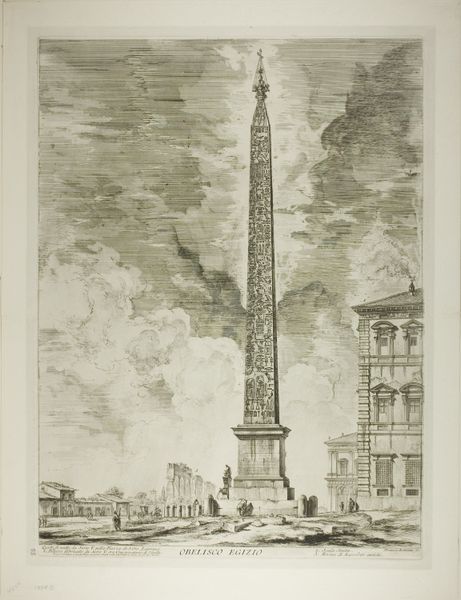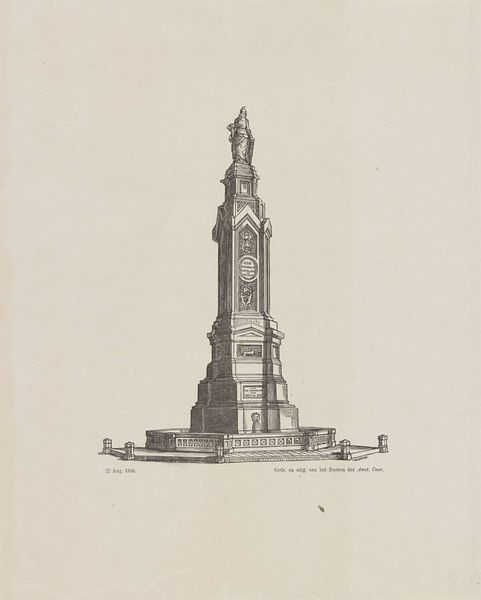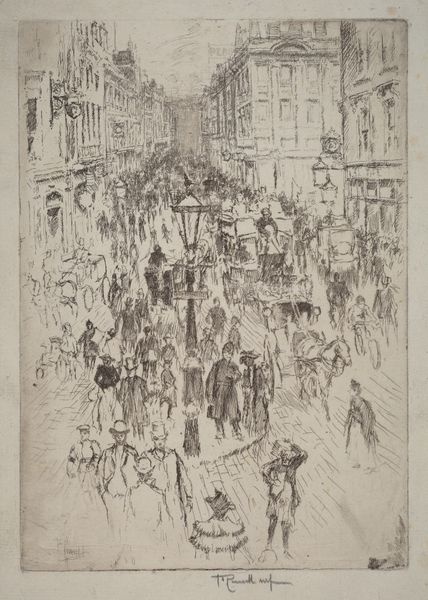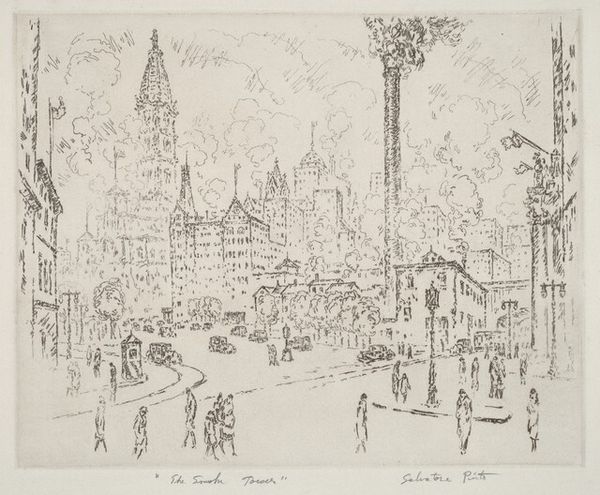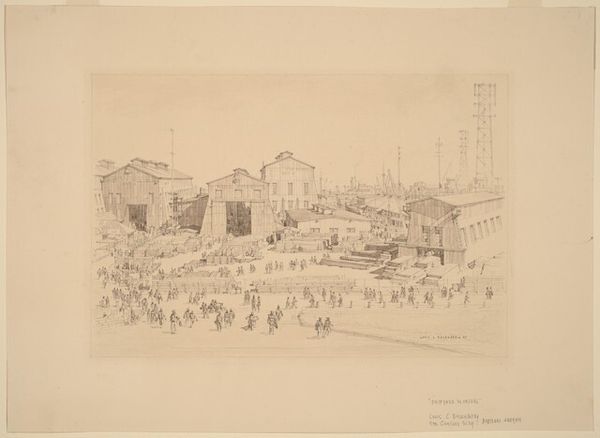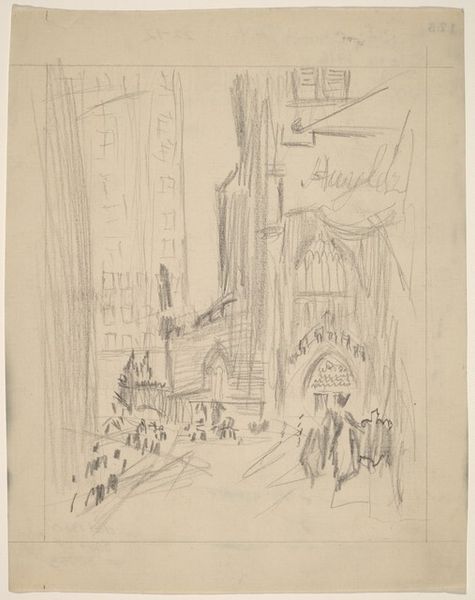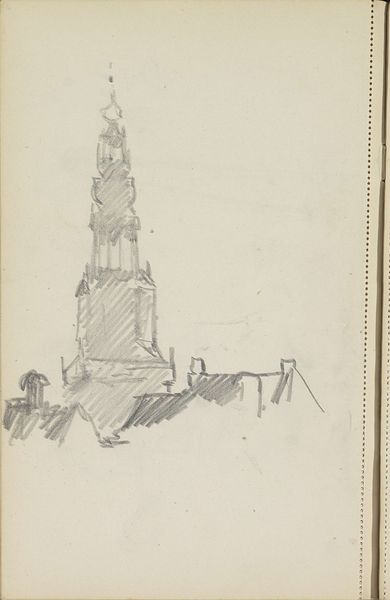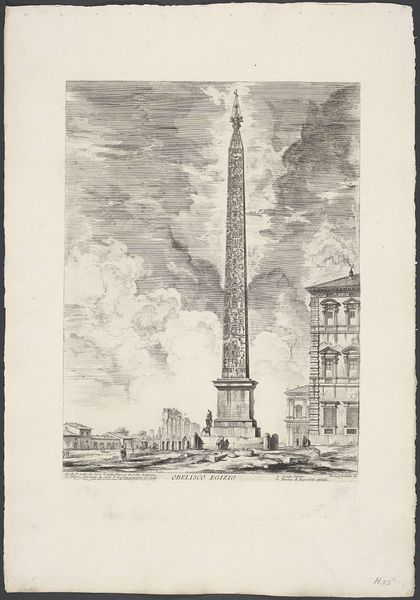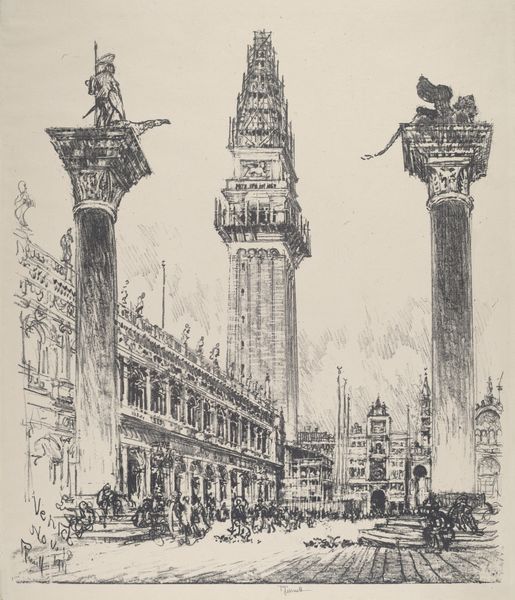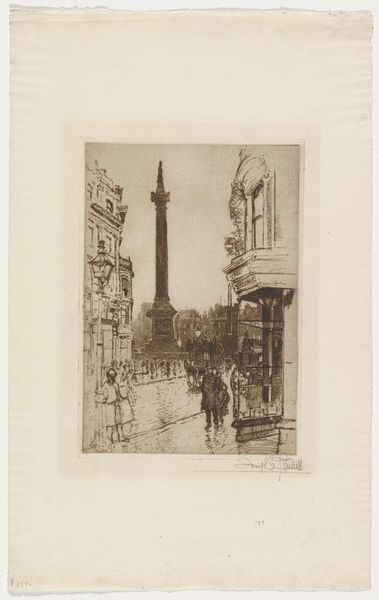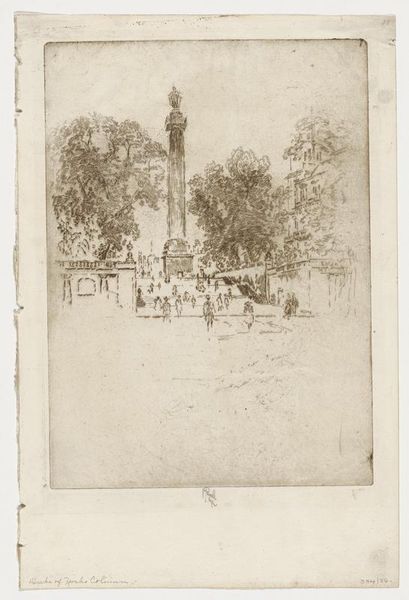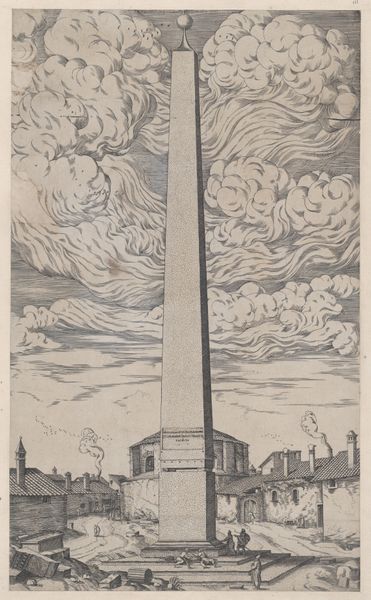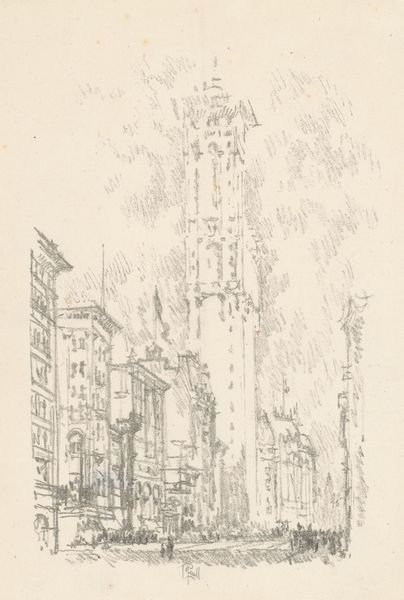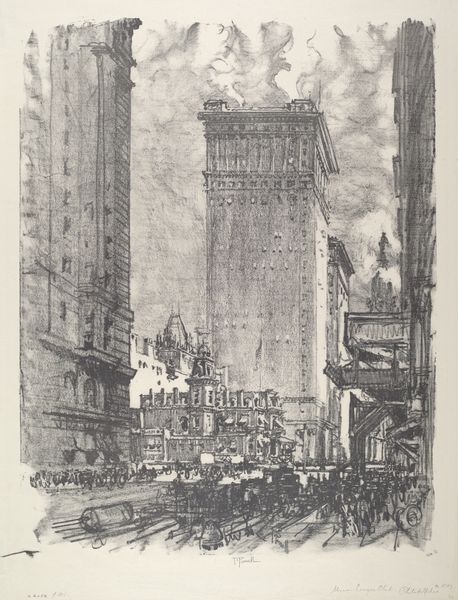
Dimensions: overall (approximate): 36.6 x 29.4 cm (14 7/16 x 11 9/16 in.)
Copyright: National Gallery of Art: CC0 1.0
Editor: This drawing, "Crowd on the Piazza del Popolo, Rome" by Muirhead Bone, dated 1912, captures a bustling cityscape in pencil. I’m struck by how the artist uses such delicate lines to convey a sense of grand scale and a lively crowd. What do you see in this piece? Curator: The obelisk. Immediately the eye is drawn to this central symbol, not merely as a point of civic pride, but as a continuous echo of power. Consider how obelisks originated in ancient Egypt, symbols of the sun god Ra, and were then adopted by the Romans, carrying associations of empire. What emotional effect does this visual continuity have, do you think? Editor: It’s like…a visual assertion of dominance through time? The crowd almost seems to gather *around* this idea of continuous power, observing some commemoration? Curator: Precisely. Now, think about how the fleeting nature of the impressionistic style interacts with that sense of enduring power. The people and carriages are transient, captured in a moment, but the obelisk remains stoic, permanent. How does that tension resonate with you? Editor: I see it as a comment on the relationship between ephemeral human activity and lasting monuments and cultural memory, everything flowing around this marker. Something of value has happened at that very location. I hadn't thought of that before. Thanks! Curator: A city square is a container for the history of that city, with all of its palimpsests, traumas and triumphs. We can observe how symbols accrue, overlap, or even attempt to erase or reinvent memory through shared experiences of ritual. These lines invite us to witness such continuity.
Comments
No comments
Be the first to comment and join the conversation on the ultimate creative platform.
